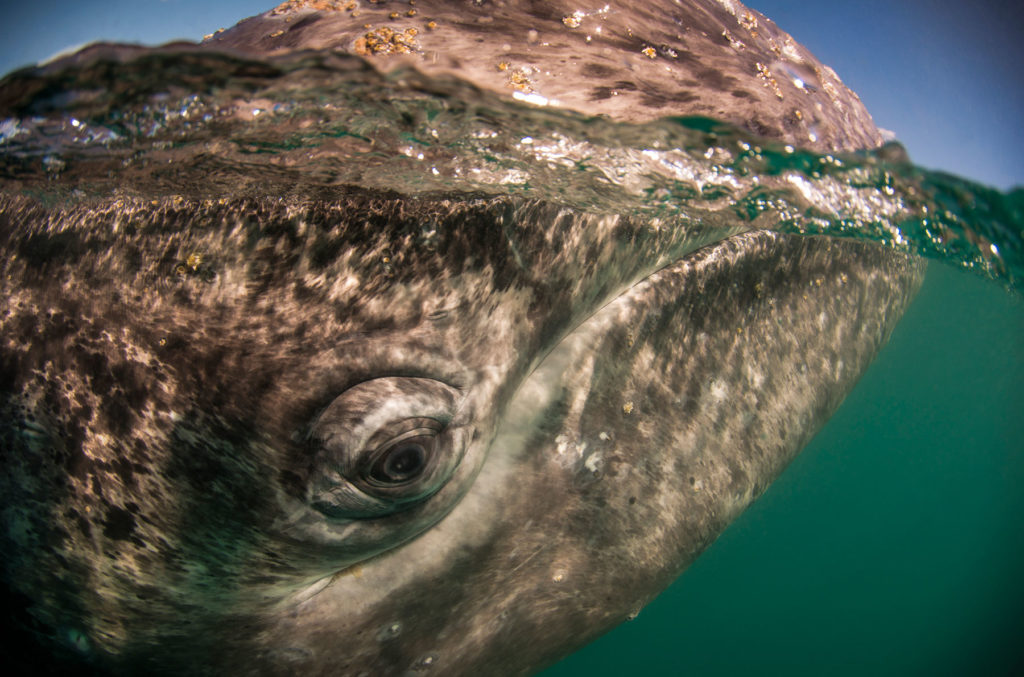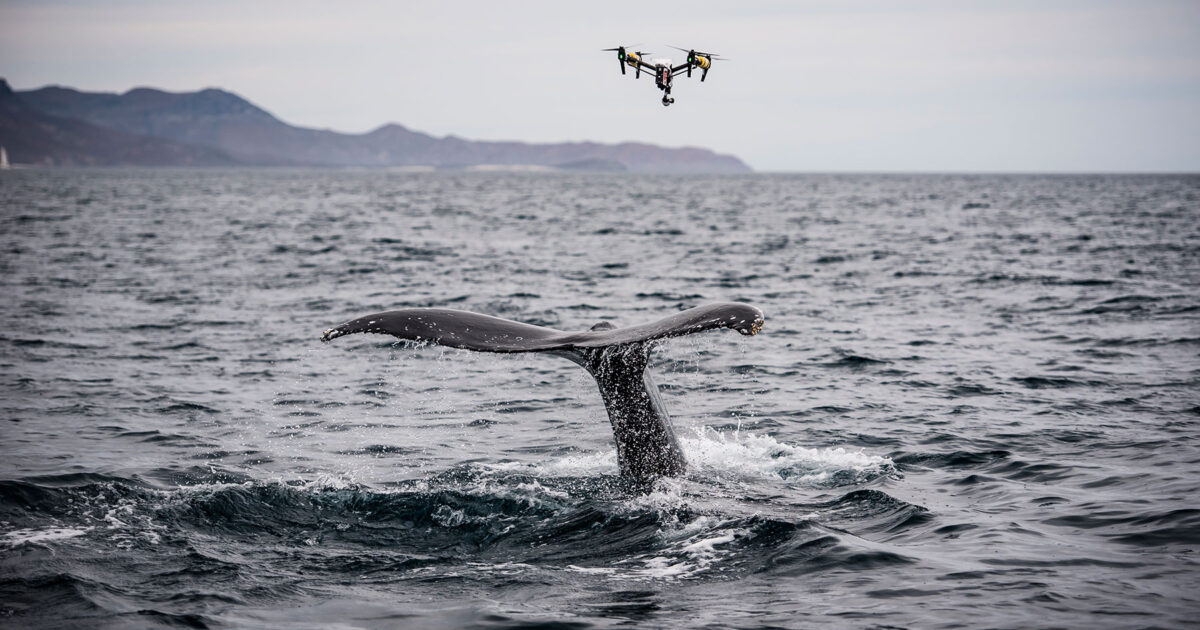With an objective of changing the way we research whales, a small team of four (lucky) guys headed to the Sea of Cortez: Technician John Graham, Scientist Andy Rogan, Ocean Alliance CEO Iain Kerr and myself (Christian Miller) to film & document the project.
We intended to prove that we can collect enough mucus (snot) from whales by using a drone. The goal is to use these new tools to enable the collection of big enough samples to be able to analyse everything we need to know about the whales. We also wanted to test whether this non-invasive way of collecting samples was going to work on lots of different species. Our hope was to sample grey whales (Eschrichtius robustus)), humpbacks (Megaptera novaeangliae) and the mighty blue whale (Balaenoptera musculus).
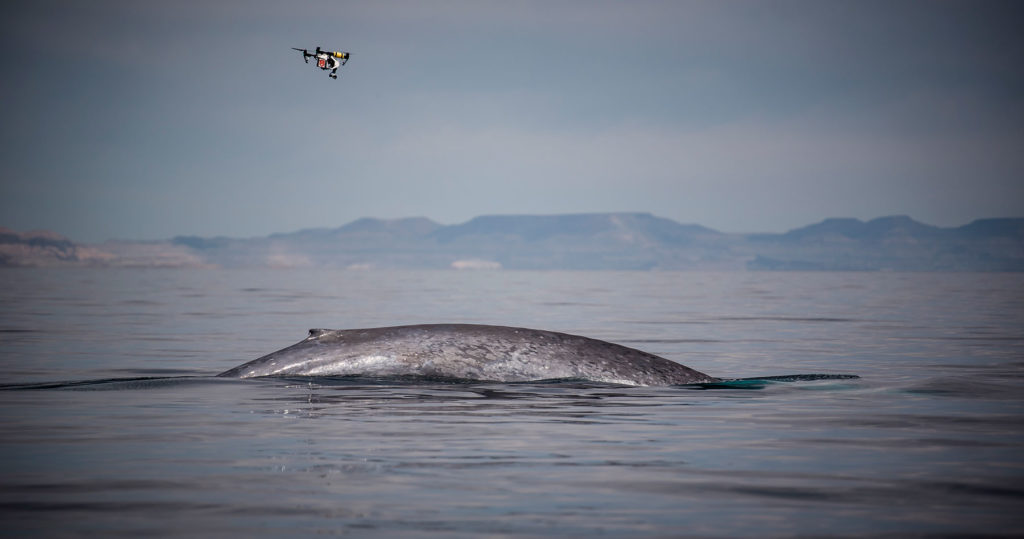
The first stage of our expedition was carried out in San Ignacio Lagoon where the accessibility of grey whales gave us the opportunity to test a number of different snot sample collection techniques. It turned out that we almost didn’t need a drone to get snot samples of these extremely curious whales, as we were getting “snotted” from head to toe anyway! Just being in close proximity to a whale is very exciting by itself, but the words “up close” became a completely different meaning for me. We were getting squashed by whales, at times by 3 mothers with calfs who took turns pushing us and actively sought interaction. For me as photographer it was the experience of a lifetime.
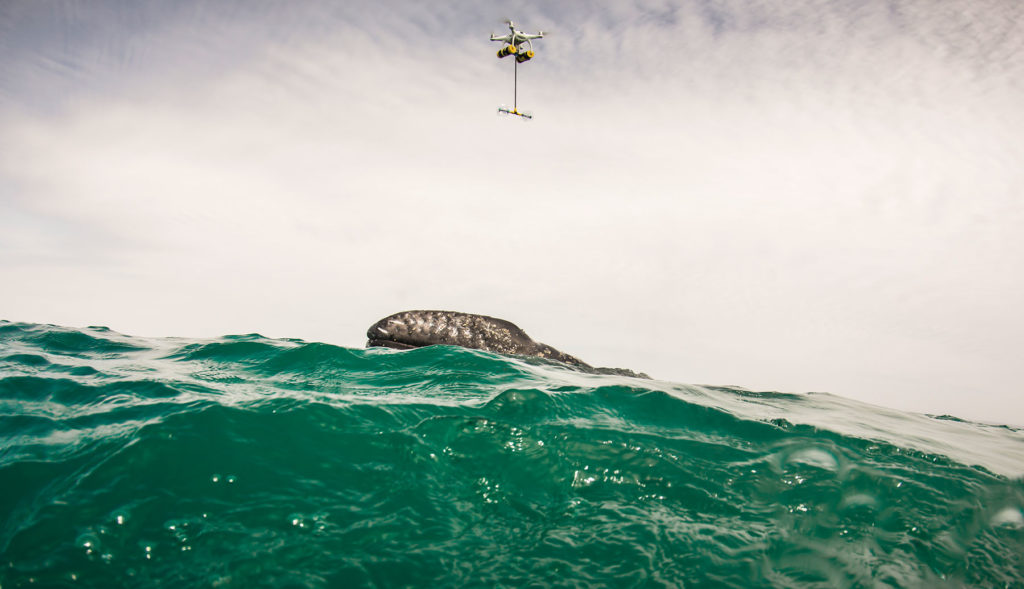
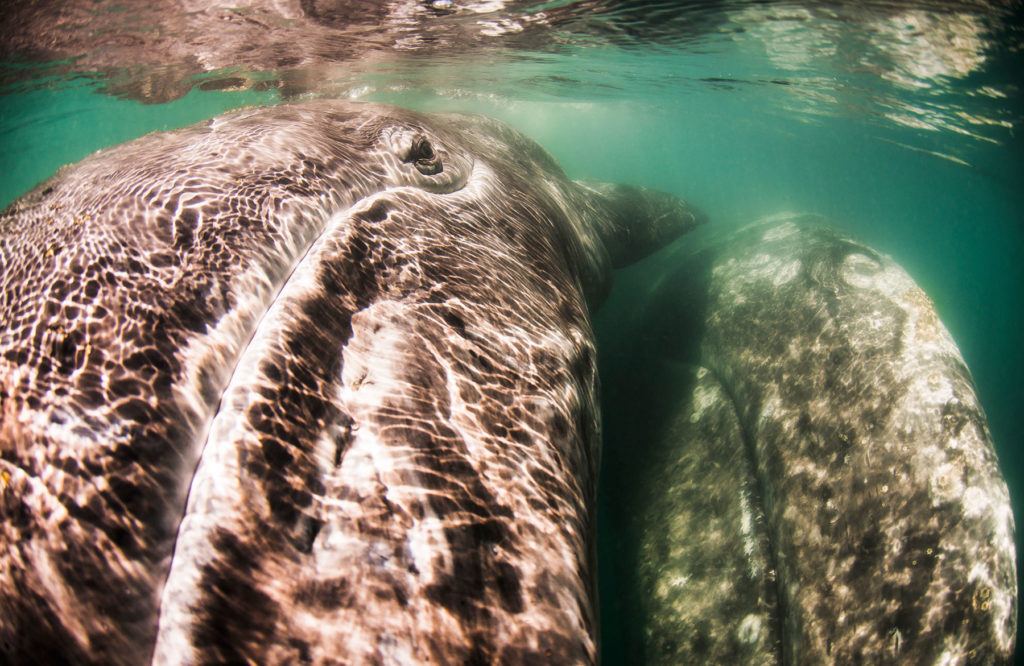
After 5 productive days, we packed our bags and made a 12 hour drive through some exciting and ever changing scenery, to La Paz for stage 2. Once we had arrived, we worked with Dr. Jorge Urban from the University of La Paz. In common with most other ecosystems worldwide, we received some bad news that El Niño had changed both the typical behavioural patterns and the numbers of the whales being sighted. We covered around 100 sun-blistering miles each day for the next few days, but even with perfect conditions is was hard to see a whale blow. So, we put the drones to work using them as an eye-in-the-sky to guide us toward them. Our luck changed and and our first sighting was of a blue whale – but it moved away rapidly. Next, we had some good interaction with a humpback whale, and after 3-4 days we finally got some good samples. On day five we found a mighty blue whale that stayed close enough for long enough, which was my first time I had been next to the largest animal ever to live on this planet. I felt very privileged to be able to witness such a moment.
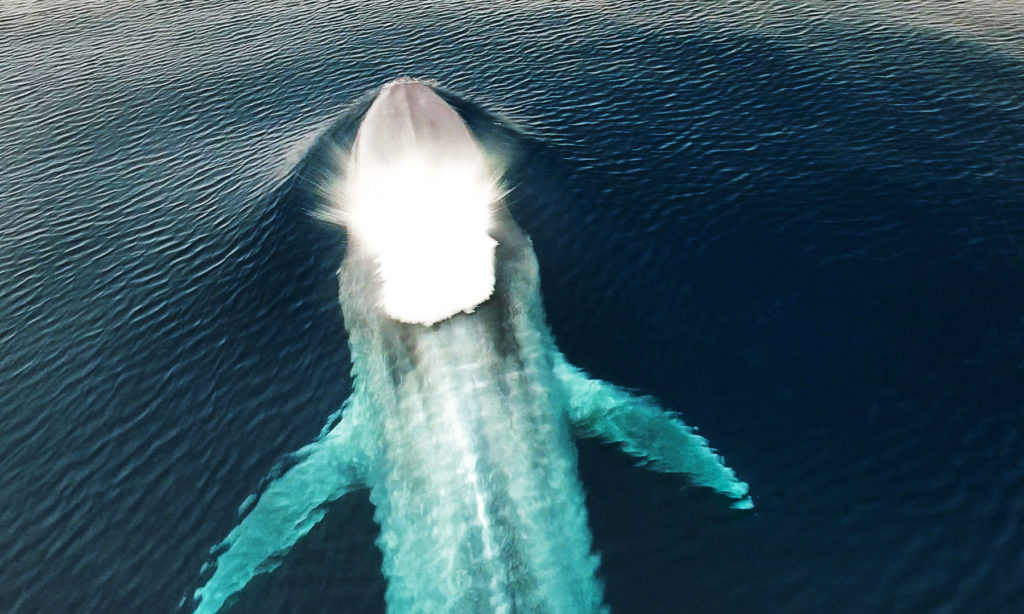
The next SnotBot expedition took place in Alaska/Frederik Sound. I did not think it could get any better than Mexico, but i was proven wrong. More on that adventure to come!
The entire team is getting ready as I am writing, for another expedition to Mexico this March, researching whales … without them even knowing! ~ Christian Miller February 2017
